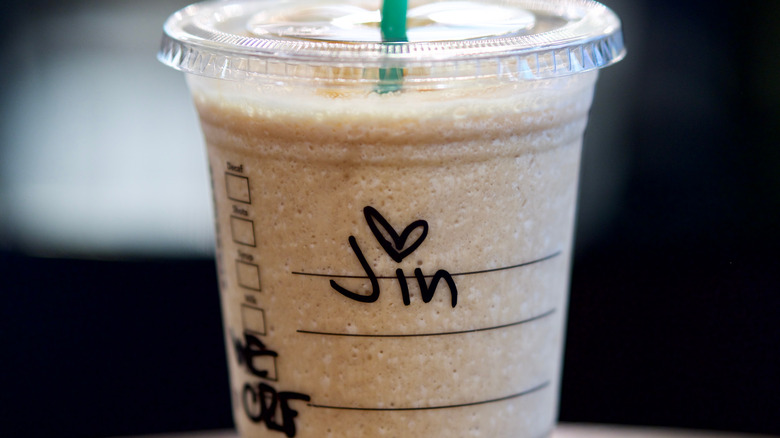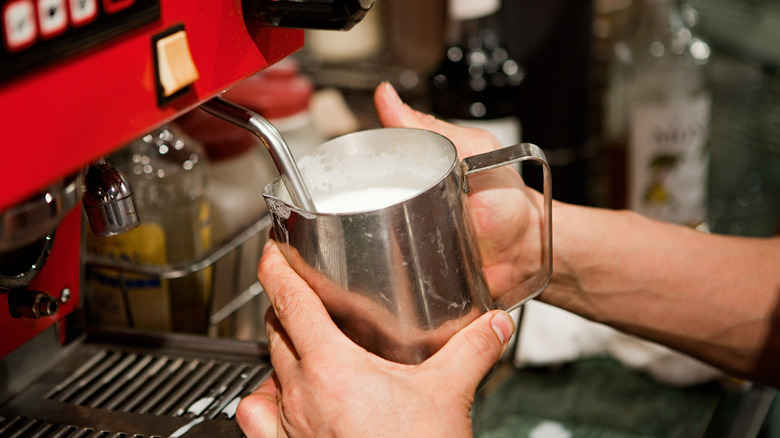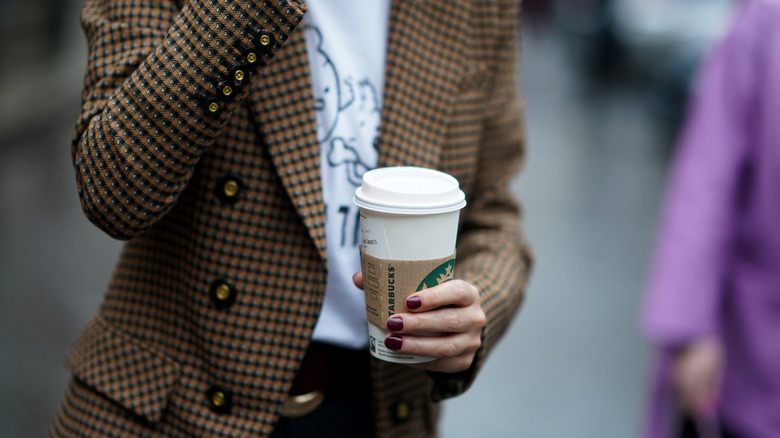The Clever Cup Placement Code Starbucks Once Used To Customize Drinks
One of the most beloved aspects of Starbucks is the ability to fully customize drink orders. For some people, customization means throwing an extra shot or three into their venti Americano. For others, customization entails the addition of innumerable pumps of flavored syrup and copious amounts of whipped cream, until the resulting beverage is a veritable bomb of sugar and caffeine. Then there are the truly bizarre orders, such as the person who requested their barista to add 25 packets of Equal to a Very Berry Hibiscus Refresher, which one can only assume is some sort of low-key masochistic act.
Regardless of your stance on customization, it's clear that Starbucks has turned the drink preparation process into a science. It's even a little surprising to learn that the chain only began adding names to cups in 2012 since the practice is so ubiquitous these days. Starbucks baristas also use their ever-present Sharpie markers to jot down drink orders onto cups, which ensures accuracy and efficiency. However, the massive chain of coffee shops preferred a much different approach in years past.
A surprising method for keeping track of customizations
The very first Starbucks location opened in Seattle in 1971. At this point, the store only sold packages of coffee and tea for home use. It wasn't until 1987 that Starbucks became an actual coffee shop where customers could enjoy a caffeinated beverage of their choosing courtesy of dedicated baristas. These days, the chain claims there are over 170,000 ways to customize drinks, which means the store's partners (which is how the chain refers to its workers) definitely have their work cut out for them.
In previous years, the chain preferred a more esoteric method of communicating customizations to other team members. Instead of using markers to customize cups with order specifics, the baristas would actually position cups on the counter in certain ways. Each store had its own unique method of communication, which could mean that a backward-facing cup indicated a customer wanted nonfat milk instead of whole. In some cases, a cup turned upside down might mean the customer preferred decaffeinated coffee in their beverage. Because this system left lots of room for error, especially when serving a large volume of customers, the chain began using its current system of marking cups at some point in the '90s. And while the process is more efficient as a result, Starbucks staff has a few humble requests for customers to make the ordering process even smoother.
Simple tricks for a fast and efficient Starbucks trip
Even Starbucks loyalists may not be aware of a simple yet highly effective tip when it comes to placing orders. According to a video shared on TikTok by a Starbucks barista, customers should always begin the order by stating the size first. This request is not an exercise in pedantry but rather based on the way staff enters orders into the point-of-sale system. Size must be entered into the system first, then the barista can add other customizations.
There are lots of other Starbucks hacks customers can use to ensure they're completely satisfied with their beverage. It's easy to confuse drink sizes since the chain forgoes the normal naming conventions, so remember: tall means small, grande means medium, and venti means large. Knowing the sizes can help you avoid a Paul Rudd-esque freakout while waiting for your desired beverage (as illustrated by this clip shared on YouTube). And if you're not sure about something, whether it's an ingredient or beverage size, don't be afraid to ask. Baristas love making recommendations to customers and will employ their professional knowledge to build you a drink you absolutely love.


